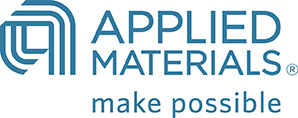Applied Materials Receives SBTi Validation of its Science-based Scope 1, 2 and 3 Emissions Reductions Targets
“Semiconductors are the foundation of technology advancements that are transforming the global economy and can improve peoples’ lives in so many ways. As demand for semiconductors increases, we must grow responsibly by collaborating broadly to reduce the industry’s environmental impact,” said
Applied’s Scope 1 and Scope 2 greenhouse gas emissions are those produced directly by the company and by the energy it purchases. Its Scope 3 emissions, which make up more than 99 percent of Applied’s carbon footprint, consist of the upstream emissions from the company’s supply chain and the downstream emissions from the use of its products by customers. Following are Applied’s near-term science-based targets that have received SBTi validation:
Applied Materials, Inc. commits to reduce absolute scope 1 and 2 GHG emissions 50% by FY2030 from a FY2019 base year.Applied Materials, Inc. also commits to increase active annual sourcing of renewable electricity from 36% in FY2019 to 100% by FY2030.Applied Materials, Inc. further commits to reduce scope 3 GHG emissions from use of sold products 55% per million USD of value added by FY2030 from a FY2019 base year.
In order to achieve its ambitious emissions reduction targets, particularly Scope 3, Applied will collaborate closely with its customers, suppliers and industry partners, as outlined in the company’s Net Zero 2040 Playbook unveiled earlier this year. Areas of focus include:
- Furthering Applied’s “3x30” program, which defines goals for improving the energy efficiency and reducing the chemical impacts of its semiconductor manufacturing equipment
- Engaging and supporting customers to transition to clean energy to power their chip manufacturing facilities where Applied’s equipment is used
- Supporting grid decarbonization efforts in key markets through advocacy and industry initiatives
In July, Applied joined with Intel as the inaugural corporate sponsors of Schneider Electric’s Catalyze program, which aims to accelerate access to renewable energy across the global semiconductor value chain. Applied is also a founder and
Forward-Looking Statements and Reporting Uncertainties
This release contains forward-looking statements, including our sustainability strategies and targets and other statements that are not historical facts. These statements, and their underlying assumptions and projections, are subject to risks and uncertainties, and are not guarantees of future performance. Factors that could cause actual results to differ materially from those expressed or implied by such statements include, without limitation: our and the industry’s ability to achieve sustainability strategies and goals; failure to realize the anticipated benefits of planned investments and technology innovations related to sustainability; the level of demand for semiconductors and our products; customers’ technology and capacity requirements; the introduction of new and innovative technologies, and the timing of technology transitions; our ability to develop, deliver and support new products and technologies; market acceptance of existing and newly developed products; and other risks and uncertainties included in the “Risk Factors” section of our
Non-financial information is subject to measurement uncertainties resulting from limitations inherent in the nature and methods used for determining such data. The selection of different but acceptable measurement techniques can result in materially different measurements.
About
Contact:

Source: Applied Materials, Inc.
